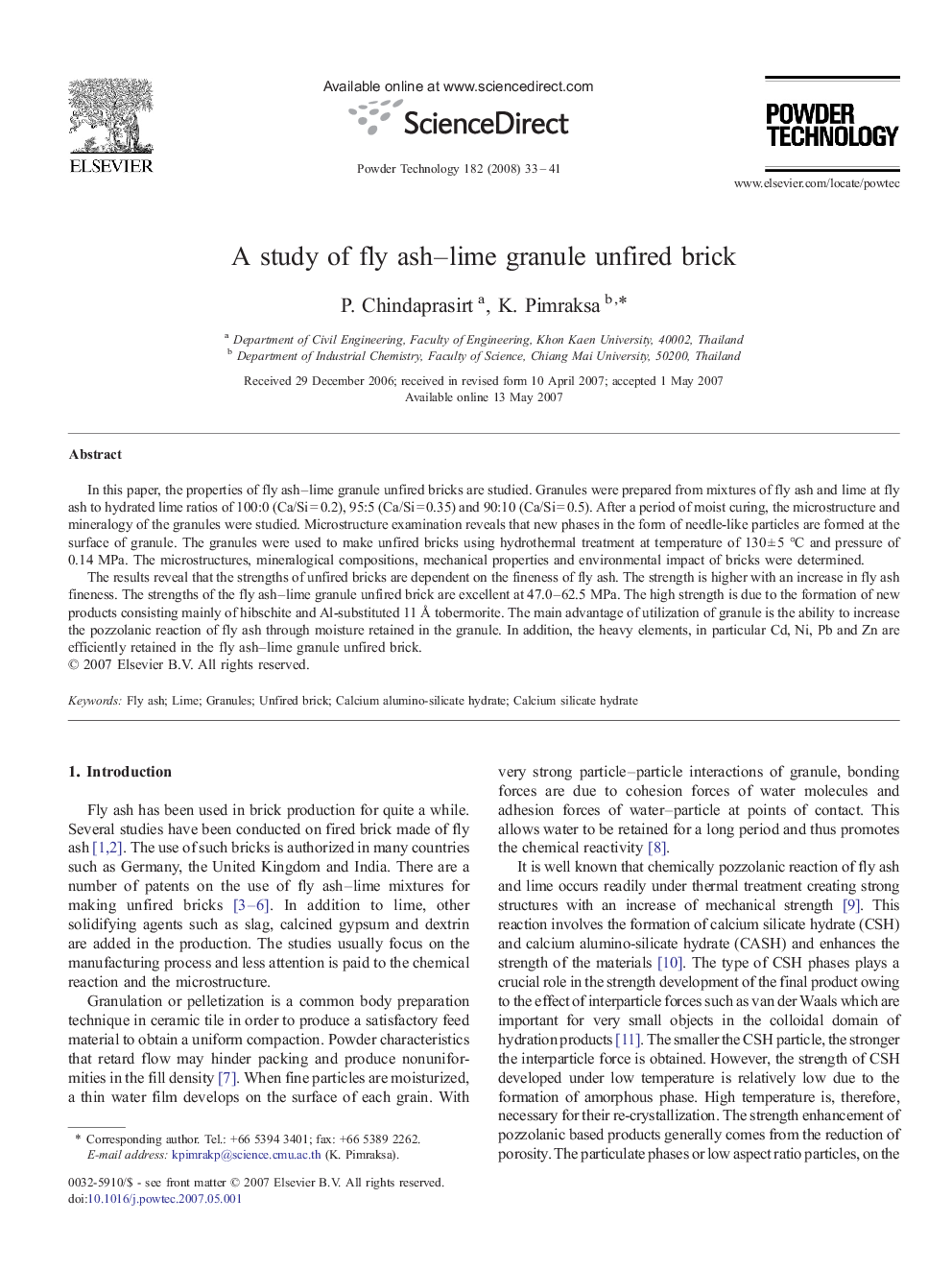| Article ID | Journal | Published Year | Pages | File Type |
|---|---|---|---|---|
| 238653 | Powder Technology | 2008 | 9 Pages |
In this paper, the properties of fly ash–lime granule unfired bricks are studied. Granules were prepared from mixtures of fly ash and lime at fly ash to hydrated lime ratios of 100:0 (Ca/Si = 0.2), 95:5 (Ca/Si = 0.35) and 90:10 (Ca/Si = 0.5). After a period of moist curing, the microstructure and mineralogy of the granules were studied. Microstructure examination reveals that new phases in the form of needle-like particles are formed at the surface of granule. The granules were used to make unfired bricks using hydrothermal treatment at temperature of 130 ± 5 °C and pressure of 0.14 MPa. The microstructures, mineralogical compositions, mechanical properties and environmental impact of bricks were determined.The results reveal that the strengths of unfired bricks are dependent on the fineness of fly ash. The strength is higher with an increase in fly ash fineness. The strengths of the fly ash–lime granule unfired brick are excellent at 47.0–62.5 MPa. The high strength is due to the formation of new products consisting mainly of hibschite and Al-substituted 11 Å tobermorite. The main advantage of utilization of granule is the ability to increase the pozzolanic reaction of fly ash through moisture retained in the granule. In addition, the heavy elements, in particular Cd, Ni, Pb and Zn are efficiently retained in the fly ash–lime granule unfired brick.
Graphical abstractGranulated fly ash is studied in terms of its microstructures and mineralogical compositions relating to chemical reactivity. The factors studied are mixing water content used for granule production and particle size of fly ash to demonstrate the advantage of granulation of fly ash for brick making. Mineralogical compositions of fly ash granule unfired brick (Ca/Si = 0.5) compose of hibschite and Al substituted 11 Å calcium silicate hydrate as seen in the figure.Figure optionsDownload full-size imageDownload as PowerPoint slide
